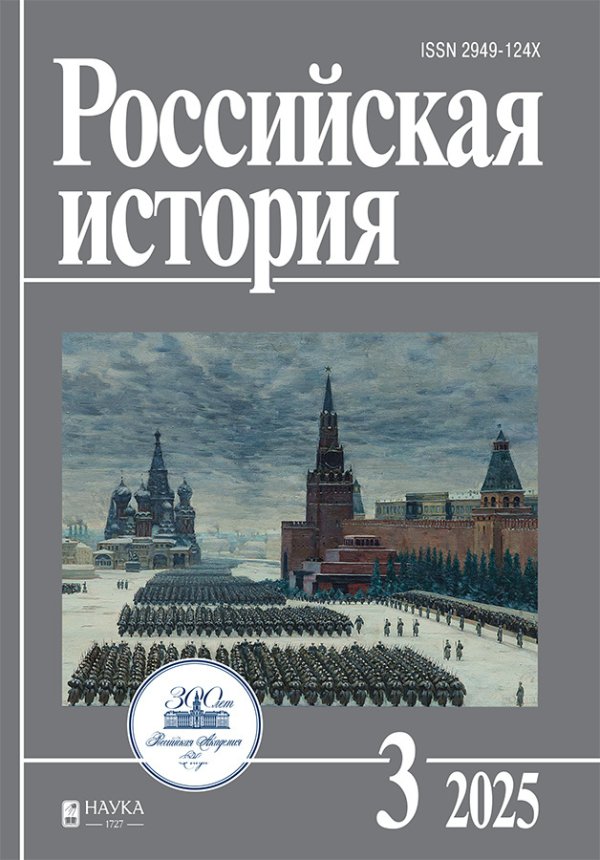«Indestructible cornerstone» of New Athos: the role of N. P. Ignatiev in the formation of spiritual and missionary center on the Caucasus
- Authors: Melnikova L.V.1
-
Affiliations:
- Institute of Russian History, Russian Academy of Sciences
- Issue: No 4 (2023)
- Pages: 93-112
- Section: Articles
- URL: https://rjsvd.com/2949-124X/article/view/663745
- DOI: https://doi.org/10.31857/S2949124X23040077
- EDN: https://elibrary.ru/HMSXDE
- ID: 663745
Cite item
Abstract
The article examines the role of the Russian ambassador to Constantinople (1864-1876) N.P. Ignatiev in the settlement of a major conflict on Mount Athos in the first half of the 1870s (the «Greek-Russian Panteleimon process»), as well as in the creation and development in the Caucasus (Abkhazia) of the New Athos Monastery of Saint Simon the Cananaean which is a branch of the Athos Russian St. Panteleimon Monastery. It is shown that the foundation of the Caucasian monastery was one of the natural results of the conflict caused by the aggravation of contradictions between different ethnic communities in St. Panteleimon Monastery in connection with the general rise of anti-Slavic and anti-Russian sentiments in the Greek environment due to Russia's position in the Greek-Bulgarian church issue, as well as to a certain extent in connection with the actions of the British diplomacy that sought to weaken Russian influence in the Balkans and the Middle East. It is shown that largely due to the actions of N.P. Ignatiev Russia managed to preserve the integrity of the Russian St. Panteleimon Monastery, avoid a break with the Patriarchate of Constantinople and even strengthen its position on Mount Athos. The origin and development of the Caucasian monastery, its situation during the Russian-Turkish War of 1877-1878, the spiritual life and missionary activity of the New Athonite monks are studied. It is emphasized that the New Athos Monastery, having emerged as a supposed «refuge» for Russian Athonians in the event of new troubles in the East, soon turned into a pearl of the Black Sea coast, a major spiritual and missionary center in the south of the Russian Empire.
Keywords
N.P. Ignatiev, athos, New Athos, caucasus, Abkhazia, Athos Russian Monastery of St. Panteleimon, New Athos Monastery of St. Simon the Cananaean, "Greek-Russian Panteleimon process", missionary work, Archimandrite Macarius (Sushkin), confessor Jerome (Solomentsov), Hieromonk Arseny (Minin), Hegumen Hieron (Vasiliev)
About the authors
Liubov Vladimirovna Melnikova
Institute of Russian History, Russian Academy of SciencesMoscow, Russia
References
- А.Л. [Архим. Леонид (Кавелин)] Абхазия и в ней Ново-Афонский Симоно-Кананитский монастырь. С планом Абхазского приморского берега, с 21-м рисунком памятников христианства в Абхазии и с планом Ново-Афонского монастыря. М., 1885.
- Андрей Николаевич Муравьёв и российская дипломатия на Православном Востоке. Дипломатические записки и переписка / Сост. И.Ю. Смирнова. М., 2019.
- Бронзов А.А. Архимандрит Иерон, настоятель Ново-Афонского Симоно-Кананитского монастыря // Христианское чтение. 1913. № 5. С. 630-649.
- Воспоминания архимандрита Иерона о посещении государем императором Александром III с августейшей семьёй монастыря Новый Афон в 1888 г. // Старина и новизна. Кн. 11. СПб., 1906. С. 267-277.
- Всеподданнейший отчёт обер-прокурора Святейшего Синода К. Победоносцева по Ведомству православного исповедания за 1885 г. СПб., 1887.
- Всеподданнейший отчёт обер-прокурора Святейшего Синода К. Победоносцева по Ведомству православного исповедания за 1896 и 1897 годы. СПб., 1899.
- Граф Игнатьев и Русский Свято-Пантелеимонов монастырь на Афоне. Серия "Русский Афон ХIХ-ХХ веков". Т. 12. Святая Гора Афон, 2016.
- Граф Н.П. Игнатьев и Православный Восток: документы, переписка, воспоминания. Т. 1: Записки о русской политике на Востоке. 1864-1887 гг. / Изд. подг. О.В. Анисимов, К.А. Вах; отв. ред. П.В. Стегний. М., 2015.
- Граф Н.П. Игнатьев и Православный Восток: документы, переписка, воспоминания. Т. 2: Переписка Н.П. Игнатьева со старцами Русского Свято-Пантелеимонова монастыря на Святой Горе Афон. 1864-1907 гг. / Автор-сост. К. Вах; науч. ред. и автор коммент. диакон П. Пахомов. М., 2018.
- Денисов Л.И. Православные монастыри Российской империи: полный список всех 1105 ныне существующих в 75 губерниях и областях России (и 2 иностранных государствах) мужских и женских монастырей, архиерейских домов и женских общин. М., 1908.
- Дмитриевский А.А. Граф Н.П. Игнатьев как церковно-политический деятель на православном Востоке. (По неизданным письмам его к начальнику Русской Духовной Миссии в Иерусалиме о. архимандриту Антонину Капустину). СПб., 1909.
- Дмитриевский А.А. Русские на Афоне. Очерк жизни и деятельности игумена Русского Пантелеймоновского монастыря священно-архимандрита Макария (Сушкина). СПб., 1895.
- Документы и переписка Ново-Афонского монастыря (1875-1894). Из архивов Русского на Афоне Свято-Пантелеимонова монастыря // К свету. 1997. № 16: Ново-Афонский Симоно-Кананитский монастырь. С. 194-251.
- История Русского Свято-Пантелеимонова монастыря на Афоне с 1735 до 1912 года. Серия "Русский Афон ХIХ-ХХ веков". Т. 5. Святая Гора Афон, 2015.
- К свету. 1997. № 16: Ново-Афонский Симоно-Кананитский монастырь.
- Мельникова Л.В. Православный фактор русской политики на Балканах в конце 1850-х - 1870-х гг. // Российская история. 2018. № 6. С. 147-161.
- Мельникова Л.В. Русская Православная Церковь и Русско-турецкая война 1877-1878 гг. М., 2020.
- Никон (Рождественский), архиеп. Мои дневники. Вып. 2. 1911 г. Сергиев Посад, 1915.
- Русский монастырь Св. великомученика и целителя Пантелеимона на Святой Горе Афонской. 7-е изд., испр. и знач. доп. М., 1886.
- Сборник договоров России с другими государствами. 1856-1917. М., 1952.
- Хевролина В.М. Николай Павлович Игнатьев. Российский дипломат. М., 2009.
- Кирил, патр. Български. Граф Н.П. Игнатиев и българският църковен въпрос. Изследване и документи. Т. 1. София, 1958.
- Hünigen G. Nikolaj Pavlovic Ignat'ev und die russische Balkanpolitik 1875-1878. Göttingen, Zürich, Frankfurt, 1968.
- Meininger Т.А. Ignatiev and the Establishment of the Bulgarian Exarchate (1864-1869). A Study in Personal Diplomacy. Madison, 1970.
Supplementary files











